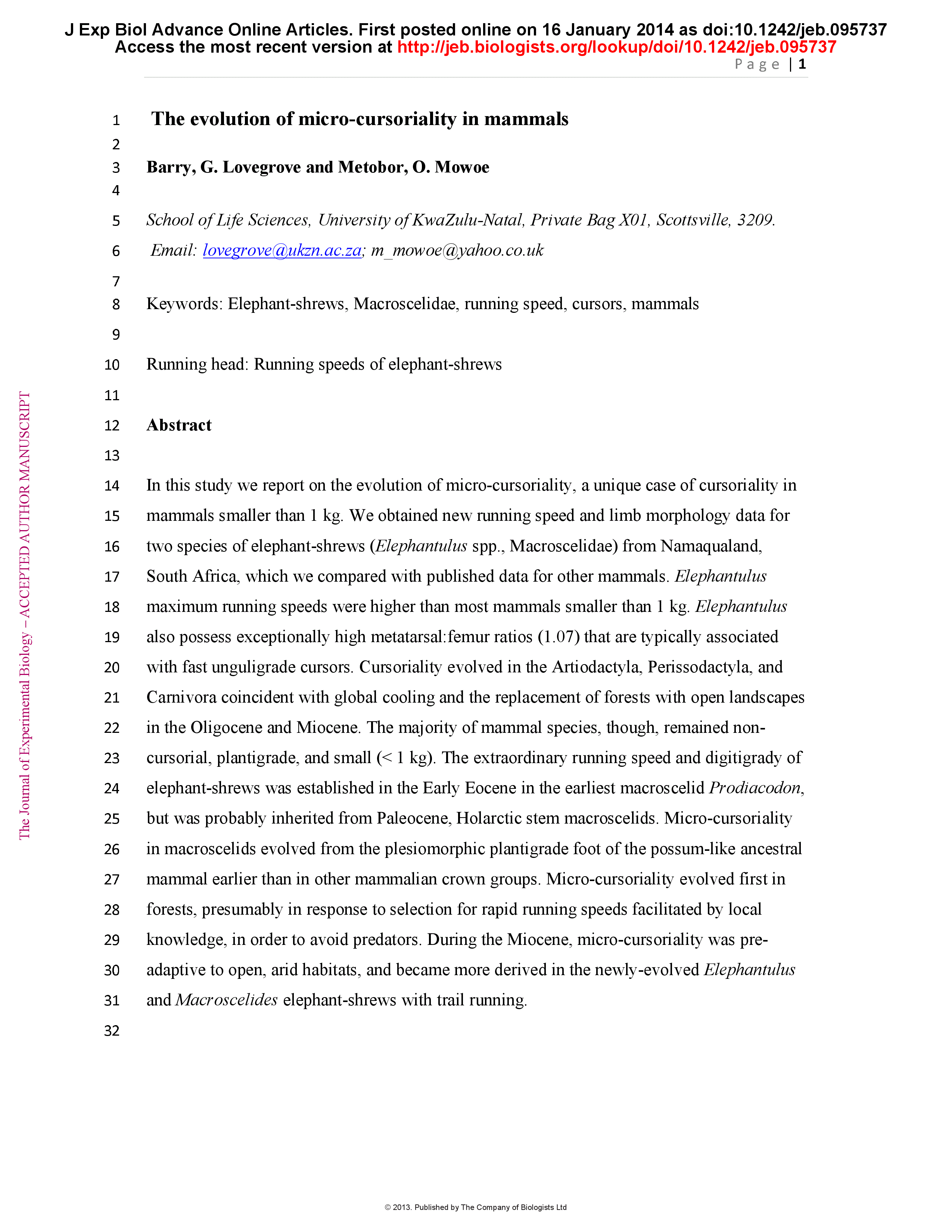Summary
In this study we report on the evolution of micro-cursoriality, a unique case of cursoriality in mammals smaller than 1 kg. We obtained new running speed and limb morphology data for two species of elephant-shrews (Elephantulus spp., Macroscelidae) from Namaqualand, South Africa, which we compared with published data for other mammals. Elephantulus maximum running speeds were higher than most mammals smaller than 1 kg. Elephantulus also possess exceptionally high metatarsal:femur ratios (1.07) that are typically associated with fast unguligrade cursors. Cursoriality evolved in the Artiodactyla, Perissodactyla, and Carnivora coincident with global cooling and the replacement of forests with open landscapes in the Oligocene and Miocene. The majority of mammal species, though, remained non-cursorial, plantigrade, and small (< 1 kg). The extraordinary running speed and digitigrady of elephant-shrews was established in the Early Eocene in the earliest macroscelid Prodiacodon, but was probably inherited from Paleocene, Holarctic stem macroscelids. Micro-cursoriality in macroscelids evolved from the plesiomorphic plantigrade foot of the possum-like ancestral mammal earlier than in other mammalian crown groups. Micro-cursoriality evolved first in forests, presumably in response to selection for rapid running speeds facilitated by local knowledge, in order to avoid predators. During the Miocene, micro-cursoriality was pre-adaptive to open, arid habitats, and became more derived in the newly-evolved Elephantulus and Macroscelides elephant-shrews with trail running.








